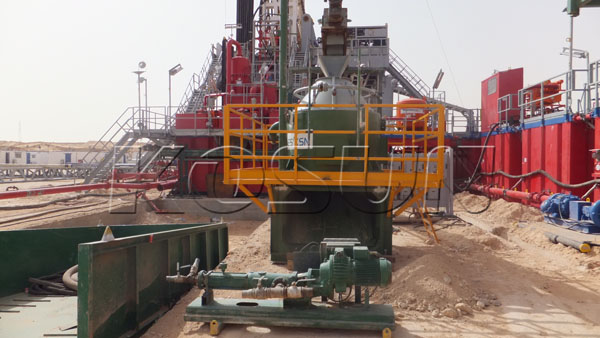Drilling waste is a byproduct of drilling operations in the oil and gas industry. It is composed of various materials, including rock cuttings, drilling mud, and produced water. Proper disposal of drilling waste is important for the protection of the environment and human health. In recent years, new technologies for drilling waste treatment have emerged, improving the efficiency and sustainability of waste management practices.
1, Present Situation of Drilling Waste Treatment
Traditionally, drilling waste has been disposed of in landfills or pits. These disposal methods pose environmental risks, as they can contaminate groundwater and soil. Additionally, they require large amounts of land and can be expensive. As a result, the industry has been moving towards more sustainable and cost-effective waste management practices.
One common method of drilling waste treatment is thermal desorption. This process involves heating the waste to high temperatures to vaporize the hydrocarbons, which can then be collected and reused. Another method is bioremediation, where microorganisms are used to break down the organic materials in the waste. This method is more sustainable, as it produces less waste and can be more cost-effective.
2, New Technology of Drilling Waste Treatment
Newer technologies have been developed to improve the efficiency and sustainability of drilling waste treatment. One such technology is the use of electrokinetics. This method involves applying an electric current to the waste, which causes the contaminants to migrate to a collection point. The contaminants can then be removed and disposed of safely.
Another technology is the use of supercritical water oxidation. This process involves heating the waste to high temperatures and pressures in the presence of oxygen. This breaks down the organic materials in the waste and produces water and carbon dioxide as byproducts. This method is more sustainable than thermal desorption, as it does not require the use of fossil fuels to power the heating process.
Nanotechnology is also being explored as a potential solution for drilling waste treatment. Nanoparticles can be used to remove contaminants from the waste through adsorption, which is the process of attracting and holding onto molecules. This method has the potential to be more efficient and cost-effective than traditional treatment methods.
Finally, the use of artificial intelligence (AI) is being explored to improve the efficiency of drilling waste treatment. AI can be used to analyze data and optimize treatment processes, resulting in improved treatment efficiency and reduced costs.
3, Conclusion:
The drilling industry has been moving towards more sustainable and cost-effective waste management practices in recent years. Traditional disposal methods, such as landfills and pits, are being replaced by newer technologies that are more efficient and environmentally friendly. Technologies such as thermal desorption, bioremediation, electrokinetics, supercritical water oxidation, nanotechnology, and AI are being explored as potential solutions for drilling waste treatment. As these technologies continue to develop and become more widely adopted, the environmental impact of drilling operations can be reduced, contributing to a more sustainable future.
KOSUN- China Solids Control Leader&Drilling Waste Management Expert
Email: sales2@adkosun.com
WhatsApp/Wechat:+86 18792396268
Contact person: Lily Wang
Online consulting:
http://www.kosun.com
http://www.kosuneco.com




